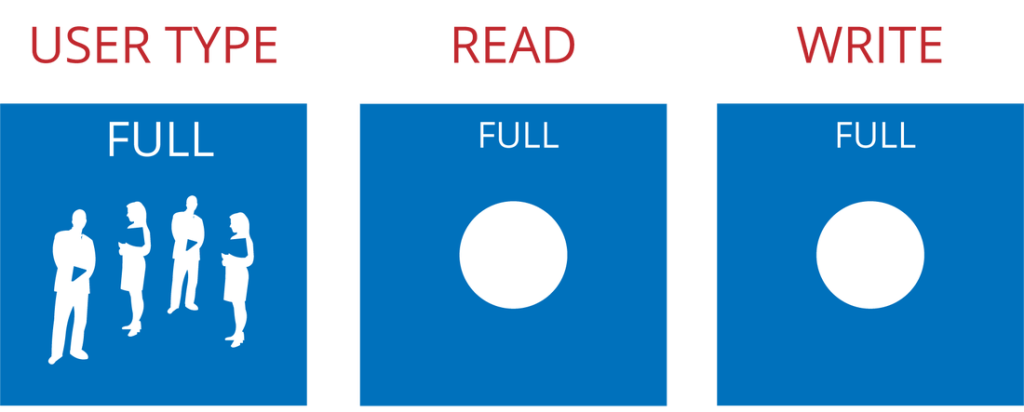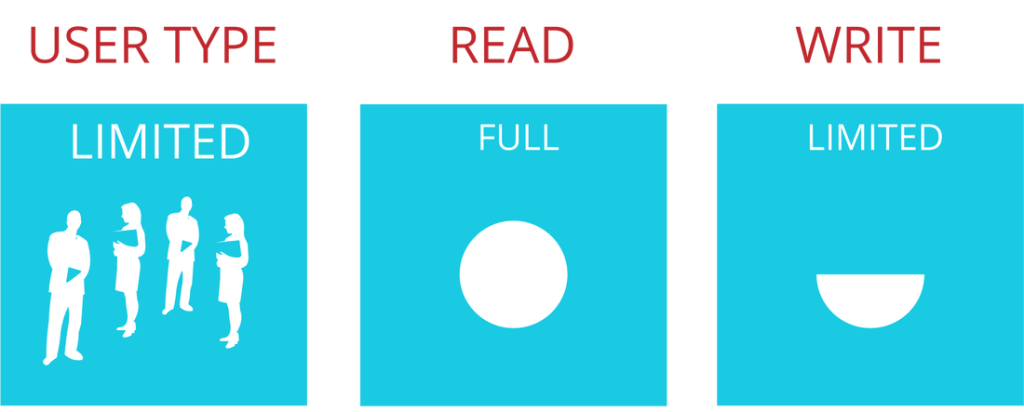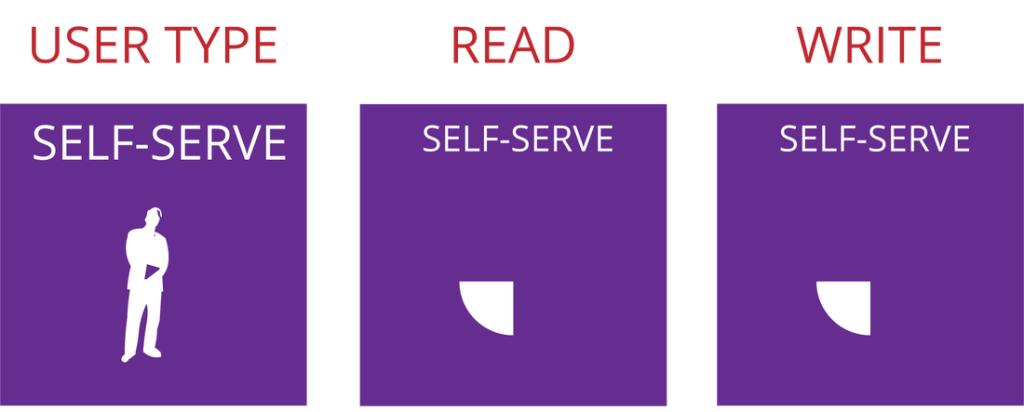Microsoft Dynamics GP offers three types of user licenses: Full, Limited, and Self-Serve. These licenses are either Concurrent or Named which is dependent on both the license type and the deployment model (on-premise vs. SaaS).
Capabilities of Each User License Type
Full Users
Full users have full read/write access to everything in Microsoft Dynamics GP. Full users are pretty much required for anyone who does any amount of data entry.

Limited Users
Limited users have full read access to everything in Microsoft Dynamics GP and limited write capabilities. The write capabilities include the ability to view and edit their employee information, enter payroll time, enter project time and expense and create purchase requisitions. Limited users are often used for senior management or department heads who need the ability to view information such as budget to actual financial reporting, but do not typically enter transactions.

Self-Serve Users
Self Serve users only have the ability to view and edit their employee information, enter payroll time, enter project time and expense and create requisitions. Self-Serve users are commonly used by organizations using the payroll and/or project accounting modules and/or those that desire a paperless purchasing request system.

Is the license available as a Concurrent or Named user license?
Concurrent user licenses are limited by the number of people logged into the system at any one time. For example, if you had 20 concurrent Full User licenses, you could set up 50 people to be able to log into the system, but only 20 of them could be in the system at any one time.Named User Licenses –
This one is pretty simple. Every person needs their own license. End of story.
Concurrent Licenses are available for both the Full and Limited user types for on-premise deployments only. Self-Serve users are always named.
For software as a service, all user types, Full, Limited, and Self-Serve, are Named.
If you have any questions about Microsoft Dynamics GP user types, please feel free to contact us.
(Download Microsoft Dynamics GP User Types full diagram.)
Deployment Model - On-Premise or SaaS Accounting Software
What are your accounting software options? First off, let’s determine potential game plans and compare the various deployment options while looking at the attributes associated with each one. We will also introduce a third option that blends elements from the first two.
1. On-Premise Deployment
- You are responsible for maintaining the server, backups… basically, all maintenance related to supporting your computer network and application servers
- Higher upfront software cost / lower annual software maintenance cost
- Higher annual IT cost
- Sometimes easier to do customizations and/or “get at your data”
2. Software as a Service (SaaS)
- Hosted on the software vendor’s systems
- No servers to maintain, just need computers connected to the Internet
- Medium annual software cost
- Lower annual IT cost
- Sometimes more limited in what you can customize and/or direct database access
- Also often called “cloud” based solutions, although the definition of “cloud” is much broader than just applications available through the internet
3. Hosted
- Combines SaaS like advantages to traditional on-premise systems, the primary benefit being that you don’t have to deal with your own hardware
- You generally purchase the software but pay to have someone else host it for you
- Subscription pricing is often available
- Often has the lowest total cost of ownership (TCO) over a multi-year period
As an example, here are the deployment options for both Intacct and Microsoft Dynamics GP:
Intacct
- Software as a Service (SaaS)
Microsoft Dynamics GP
- On-Premise
- On-Premise + Hosted
- Subscription + Hosted
How do you access accounting software?
All of the SaaS vendors offer pure web interfaces for their products. This makes deployment easy as all you need is a web browser. Hosted deployments have traditionally used tools like Citrix or Remote Desktop type technologies to provide access. As such, productivity tools such as email and Microsoft Office are bundled in order to provide one seamless environment in which to operate.
That being said, many of the traditional on-premise players are rolling out pure web interfaces for their products. Microsoft Dynamics GP for example now allows you to access virtually all of the system functionality through a pure browser-based client.
Which accounting software option is right for you?
The answer to this question is different for every organization. Here are some common profiles with which you might identify.
On-premise
- Have existing IT infrastructure
- Have access to IT staff
- Cash flow supports larger up-front costs
- Heavy customization and integration requirements
- The approach often used by larger companies with mature IT capabilities
On-premise + hosted
- Have an existing IT infrastructure, but it might be aging
- Looking to have the IT department focus on mission-critical tasks, not routine things like server maintenance
- Cash flow supports larger up-front costs
- Heavy customization and integration requirements
SaaS
- Have minimal IT infrastructure
- Lack of internal IT expertise
- Cash flow supports medium recurring payments
- Light customization and integration requirements
- The approach often used by startups and companies looking to focus on their business, not manage IT resources
Where can you find more information about accounting software?
There are many options to choose from and the choice these days is not as simple as cloud vs. running software on your own hardware. Think of it as the offensive line of your favorite football team. Every team is different, but having an effective one is critical for the whole “team” to function and move forward.
If you would like to learn more I encourage you to contact us.
